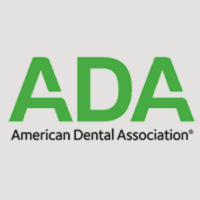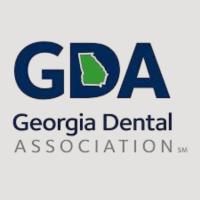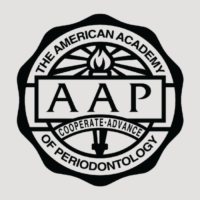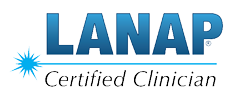Ridge AugmentationAlpharetta, GA
Ridge augmentation is a surgical procedure that rebuilds the width or height of lost jawbone after tooth loss or bone resorption. This technique helps restore the ridge shape so that implants, bridges, or dentures fit securely. Whether planning for implants or restoring healthy jaw structure, ridge augmentation provides the foundation for a strong, lasting solution.
Ridge augmentation is available at Padhiar Periodontics & Implant Specialists’ Alpharetta office. From advanced diagnostic tools to precise techniques, we are committed to providing guidance and quality care throughout your treatment journey. To schedule an appointment, call (770) 585-3682.
What is a Ridge Augmentation?
Ridge augmentation is a type of bone grafting procedure that rebuilds the shape and volume of the jawbone where teeth are missing. When a person loses or removes a tooth, the surrounding alveolar bone often resorbs the remaining bone tissue, causing the jaw to shrink in height and width. This shrinkage can make future tooth replacements, such as implants, more difficult or even impossible without intervention.
To correct this, we place bone grafting material into the area of deficiency. Over time, the graft integrates with natural bone and encourages new growth. This newly formed bone creates a stronger, more supportive base for implants, bridges, or dentures, restoring the natural contours of the jaw and gums for a more aesthetic result.
“Ridge augmentation is a type of bone grafting procedure that rebuilds the shape and volume of the jawbone where teeth are missing.”
Who is an Ideal Candidate for Ridge Augmentation?
We recommend ridge augmentations for patients who have experienced bone loss in the jaw and require restoration for functional or cosmetic reasons. Ideal candidates include:
- Individuals planning to receive dental implants but do not have sufficient bone structure
- Patients with visible indentations or irregular gumlines due to bone resorption
- Individuals with long-standing tooth loss or previous extractions where the bone has collapsed
Other considerations include general health, oral hygiene habits, and non-smoking status, as smoking may hinder graft integration and healing. Each patient will undergo a consultation to determine whether ridge augmentation is the appropriate first step before further restorative treatments.
"We recommend ridge augmentations for patients who have experienced bone loss in the jaw and require restoration for functional or cosmetic reasons."
How to Prepare for a Ridge Augmentation
Preparation begins with a comprehensive consultation and diagnostic imaging, often using 3D cone beam CT scans to assess bone quantity and quality. We will also review the patient’s dental history, check for signs of infection or inflammation, and determine the ideal grafting technique. Note that some patients may require pre-treatment steps such as periodontal therapy or cavity control before scheduling the augmentation to prevent the new material from being rejected or breaking down.
"Preparation begins with a comprehensive consultation and diagnostic imaging, often using 3D cone beam CT scans to assess bone quantity and quality."
What to Expect During a Ridge Augmentation Procedure
On the day of the procedure, we administer local anesthesia to ensure comfort. For more complex cases, we may also use sedation. Once the site is numb, the periodontist makes a small incision in the gum to access the jawbone. The periodontist then carefully places grafting material in the area of deficiency and applies a protective membrane to support healing before suturing the gum closed to cover the area.
The entire procedure generally takes one to two hours, depending on the complexity and number of sites being treated. Patients return home the same day with aftercare instructions and a follow-up schedule to monitor healing progress.
In some cases, ridge augmentation may be performed in combination with a tooth extraction (socket preservation) to prevent bone loss from occurring in the first place. In others, the procedure is done several months or even years after tooth loss to rebuild bone for future implant therapy.
What to Expect During Recovery
Healing from ridge augmentation typically takes four to six months. During this period, the graft material encourages the body to generate new bone, gradually integrating into the surrounding jaw structure. Follow-up appointments help track bone development and determine the right timing for future treatments, such as implant placement.
Post-operative care includes:
- Maintaining a soft-food diet to prevent disruption of the graft site
- Using antimicrobial mouth rinses to control bacteria
- Avoiding smoking, alcohol, and vigorous physical activity for the first few days
- Following prescribed antibiotics and pain management protocols
While we also advise patients to avoid brushing directly over the graft site initially, keeping the rest of the mouth clean remains essential. Swelling, minor discomfort, or bruising may occur, but these symptoms typically resolve within a week. By the end of the healing, the grafted bone should be strong and stable, ready for additional restorative procedures.
Questions Answered on This Page
Q. What is a ridge augmentation?
Q. How do you determine ideal candidates for ridge augmentations?
Q. How does the periodontist help me prepare for the ridge augmentation?
Frequently Asked Questions
Q. How long does it take for a ridge augmentation to heal?
A. Healing time can range from four to six months, depending on the size of the graft and the individual’s healing ability. During this period, new bone gradually forms and integrates with the grafted material. Through check-up appointments, we will monitor progress to determine the right time for implant placement or further treatment.
Q. Is ridge augmentation recovery painful?
A. Some discomfort, swelling, and mild bruising are expected following surgery, but these symptoms are usually manageable with over-the-counter (OTC) or prescribed pain medication. Most patients experience only minor discomfort in the first few days. We will review specific post-operative instructions and follow-up visits to help ensure a smooth recovery.
Q. Is ridge augmentation always necessary for dental implants?
A. We recommend ridge augmentation when the jawbone is too thin or short to support implants securely. Without sufficient bone volume, implants may not integrate properly or remain stable. We evaluate each case individually to determine whether augmentation is necessary for success.
Q. Are there risks associated with ridge augmentation?
A. As with any surgical procedure, there are some risks, including infection, bleeding, or graft failure. However, these complications are uncommon when performed by a skilled periodontist. Further, patients who follow all aftercare instructions as described typically achieve safe outcomes.
Q. Does the grafting material come from my body?
A. Yes, autografts use the patient’s own bone, often harvested from another area of the mouth or jaw. However, other safe and effective options include donor bone (allografts), animal-derived grafts (xenografts), and synthetic substitutes (most common). We will recommend the best technique and material based on individual needs.
Call Us Today
Ridge augmentation helps patients regain lost alveolar bone structure and prepare for secure, long-lasting tooth replacement options. At Padhiar Periodontics & Implant Specialists, we approach every treatment with precision, experience, and a commitment to patient comfort. If you are interested in learning more about this procedure or determining if you are an ideal candidate, contact our Alpharetta office at (770) 585-3682.
Contact Us
Padhiar Periodontics & Implant Specialists is located at
12220 Birmingham Hwy Building 10, Suite
B
Alpharetta, GA
30004









